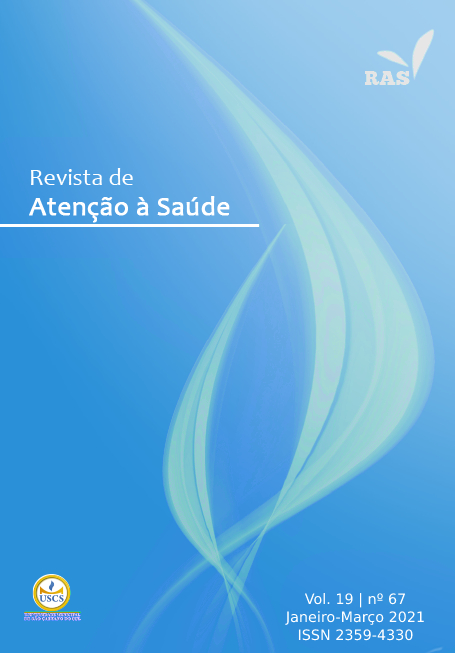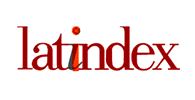The use of the availability scale for interprofessional education in health in national publications
DOI:
https://doi.org/10.13037/ras.vol19n67.7325Keywords:
Interprofessional Education, Higher Education, Interprofessional RelationsAbstract
Readiness for Interprofessional Learning Scale (RIPLS), stands out for its efficiency in the evaluation and direction of Interprofessional Education (IPE) initiatives. Objective: This study aimed to analyze the use of this scale in national surveys. Materials and Methods: The survey of articles was done at Pubmed, Capes Journals, SCIELO and LILACS using the descriptors "Interprofessional Education", "Higher Education", "Interprofessional Relations", "Teamwork", and "RIPLS". Results and Conclusions: 7 articles were identified that indicate a tendency to use RIPLS to evaluate EIP initiatives in undergraduate and permanent health education, with little research on availability throughout training. There are divergences in the version of the RIPLS applied and in the methods of analysis, facts that hinder the comparison of the studies. It is suggested to use the validated version of this tool, to present the results in graphs and / or tables, and to use statistical analyzes that guarantee the exploration and comparison of the data.
Downloads
References
Organização Mundial da Saúde. Marco para Ação em Educação Interprofissional e Prática Colaborativa. Genebra; 2010. Disponível em: http://www.fnepas.org.br/oms_traduzido_2010.pdf. Acesso em: 25 jan. 2020.
Peduzzi M, Norman I, Coster S, Meireles E. Adaptação transcultural e validação da Readiness for Interprofessional Learning Scale no Brasil. Rev. Esc. Enferm. USP 2015; 49:7-15.
Parsell G, Bligh J. The Development of a Questionnaire to Assess the Readiness of Health Care Students for Interprofessional Learning (RIPLS). Med. educ.1999; 33:95-100.
Oishi A, Haruta J, Yoshimi K, Goto M, Yoshida K, Yoshimoto H. Cross-cultural adaptation of the professional version of the Readiness for Interprofessional Learning Scale (RIPLS) in Japanese. J. interprof. care. 2017; 31:85-90.
Pype P, Deveugele M. Dutch Translation and Validation of the Readiness for Interprofessional Learning Scale (RIPLS) in a Primary Healthcare Context. Eur. J. Gen. Pract. 2016; 22:225-31.
Freitas ALP, Rodrigues SG. A avaliação da confiabilidade de questionários: uma análise utilizando o coeficiente alfa de Cronbach. XII Simpósio de Engenharia de Produção – SIMPEP. Bauru: UNESP, 2005.
Aguilar-da-Silva RH, Scapin LT, Batista NA. Avaliação da formação interprofissional no ensino superior em saúde: aspectos da colaboração e do trabalho em equipe. Avaliação (Campinas; Sorocaba) 2011; 16:167-84.
Souto TS, Batista SH, Batista NA. A Educação interprofissional na formação em psicologia: olhares de estudantes. Psicol. ciênc. prof. 2014; 34:32-45.
Rossit RAS, Freitas MAO, Batista SSHS, Batista NA. Construção da identidade profissional na educação interprofissional em saúde: percepção de egressos. Interface (Botucatu, Online). 2018; 22:1399-1410.
Tompsen NN, Meireles E, Peduzzi M, Toassi, RFC. Educação Interprofissional na graduação em Odontologia: experiências curriculares e disponibilidade de estudantes. Rev. odontol. UNESP (Online) 2018; 45:309-20.
Nuto SAS, Lima Júnior FCM, Camara AMCS, Gonçalves CBC. Avaliação da disponibilidade para aprendizagem interprofissional de estudantes de ciências da saúde. Rev. bras. educ. méd. 2017; 41:50-7.
Oliveira VF, Bittencourt MF, Pinto IFN, Lucchetti ALG, Ezequiel OS, Lucchetti G. Comparison of the Readiness for Interprofessional Learning and the rate of contact among students from nine different healthcare courses. Nurse educ. today 2018; 63:64-8.
Padula MGC, Aguilar-da-Silva RH. Professional profile of dentists who are members of the Family Health Strategy city of Marilia, São Paulo: the challenge of interprofessional work. Rev. odontol. UNESP (Online) 2014; 43:52-60.
Peixoto LS, Gonçalves LC, Costa TD, Tavares CMM, Cavalcanti ACD, Cortez EA. Educação permanente, continuada e em serviço: desvendando seus conceitos. Enferm. glob. 2013; 29:324-40.
Casanova IA, Batista NA, Moreno LR. A Educação Interprofissional e a prática compartilhada em programas de residência multiprofissional em Saúde. Interface (Botucatu, Online) 2018; 22:1325-37.
Cadastro Nacional de Cursos e Instituições de Educação Superior. Brasil: Ministério da Educação [Acesso em: 10 fev. 2020]. Disponível em: http://emec.mec.gov.br/.
Neves DCA, Gonçalves C, Favaro TCP. Pós-graduação e Residência Multiprofissional em Saúde HC-UFG: a produção do serviço social. R. Katál. 2017; 20:225- 33.
Rapchak ME, Nolfi DA, Turk MT, Marra L, O’Neil CK. Implementing an interprofessional information literacy course: impact on student abilities and attitudes. J. med. libr. assoc. 2018; 106:464-70.
Montanari PM. Formação para o trabalho no ensino das graduações em saúde. Saúde Soc. 2018; 27:980-86.
Peduzzi M, Norman IJ. Validação de instrumento de medida do aprendizado interprofissional para trabalho em equipe. Encontro Internacional de Pesquisa em Enfermagem. São Paulo: EE-USP, 2012.
Alexandre NMC, Coluci MZO. Validade de conteúdo nos processos de construção e adaptação de instrumentos de medidas. Cien. Saude Colet. 2011; 16:3061-68.
Marcussen M, Nørgaard B, Borgnakke K, Arnfred S. Interprofessional clinical training in mental health improves students’ readiness for interprofessional collaboration: a nonrandomized intervention study. BMC med. educ. 2019; 27:1-10.
Mowat S, Hein C, Walsh T, MacDonald L, Grymonpre R, Sisler J. Changing health professionals´ attitudes and practice behaviors through interprofessional continuing education in oral-systemic health. J. dent. educ. 2018; 81:1421-29.
Downloads
Published
Issue
Section
License
Copyright (c) 2021 Mariana Rotta Bonfim, Bruna Cunha de Souza

This work is licensed under a Creative Commons Attribution-NonCommercial-ShareAlike 4.0 International License.
Policy Proposal for Journals offering Free Delayed Access
Authors who publish in this magazine agree to the following terms:
- Authors maintain the copyright and grant the journal the right to the first publication, with the work simultaneously licensed under a Creative Commons Attribution License after publication, allowing the sharing of the work with recognition of the authorship of the work and initial publication in this journal.
- Authors are authorized to assume additional contracts separately, for non-exclusive distribution of the version of the work published in this magazine (eg, publishing in institutional repository or as a book chapter), with the acknowledgment of the authorship and initial publication in this journal.
- Authors are allowed and encouraged to publish and distribute their work online (eg in institutional repositories or on their personal page) at any point before or during the editorial process, as this can generate productive changes, as well as increase impact and citation of the published work (See The Effect of Open Access).









